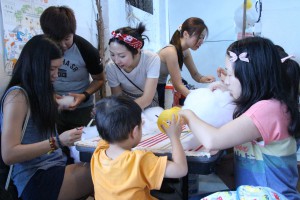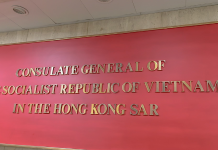Yuen describes the event as “very local” and thinks it improved community bonding as many residents living nearby asked many questions about the market before it began.
Next, Yuen wants to invite an old footwear shop that used to make leather boots for the British colonial soldiers and young leather crafters to work together at the market.

“The older generation is equipped with knowledge which the young lack; the new generation has ideas the old are not aware of. Through this activity, I wish to connect the two generations,” says Yuen.
What he really wants to do is to change the government’s top-down approach to heritage preservation and youth development. He wants to use the market as a showcase, demonstrating that local community groups can perform the same functions using a bottom-up approach and at a lower cost.
His idea might sound radical and new but he is in fact merely following in the footsteps of the old villagers. In the 1950s, villagers from Fanling, Tai Po, Sha Tau Kok and Ta Ku Ling had already adopted a bottom-up approach to build Luen Wo Market through community funding. The market was extremely popular with the locals.
Today, the new Luen Wo Market is just as much of a resounding success. Where the old building had become empty and quiet, the Mid-Autumn event once again brought back lively crowds. This is no surprise to Yuen. “A market is the basic element for living in groups. Apart from providing a place for people to buy basic necessities, it is also where the cohesiveness lies in a community,” he says.
*Jordan Chan Wing-fai is also contesting the Nam Cheong North constituency in the upcoming District Council election
Edited by Kanis Leung






































